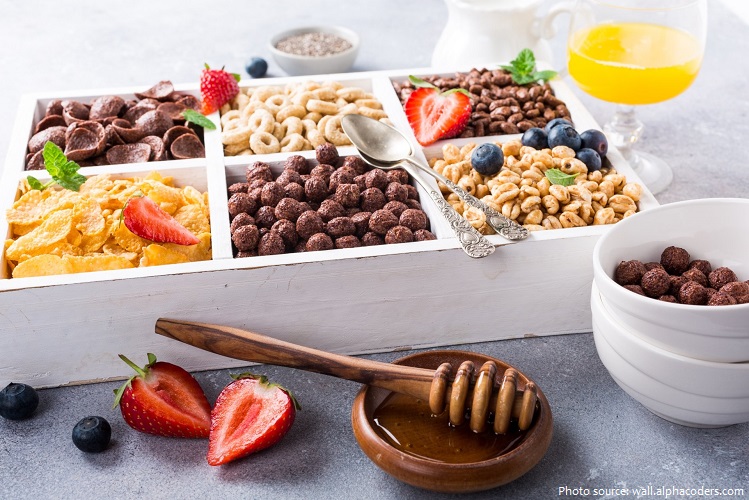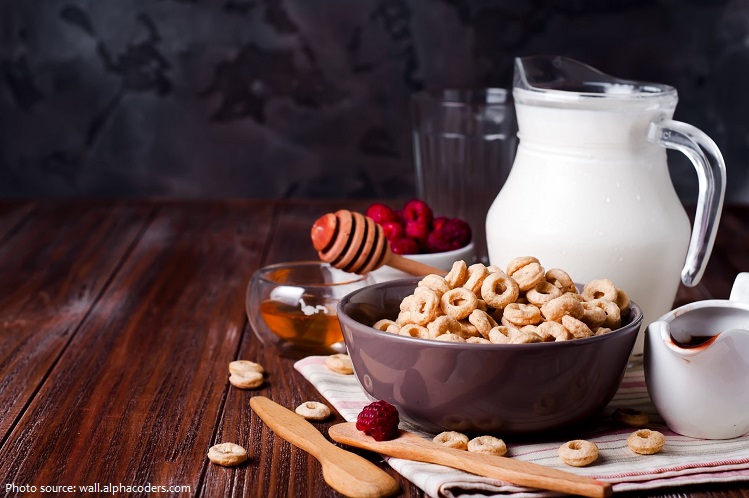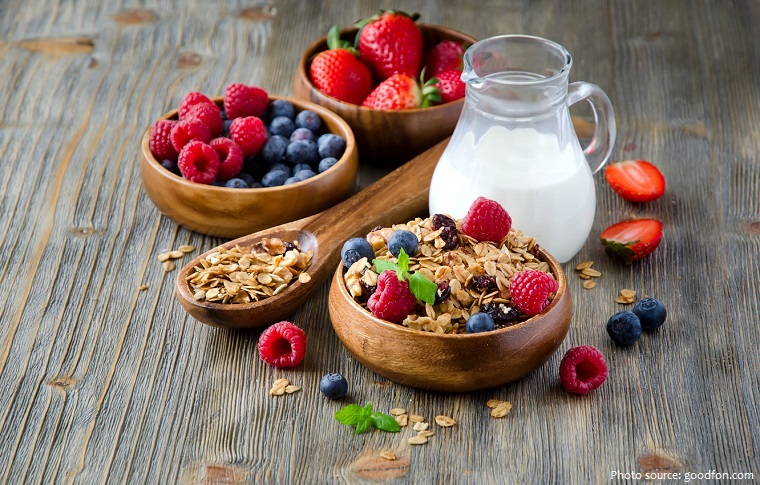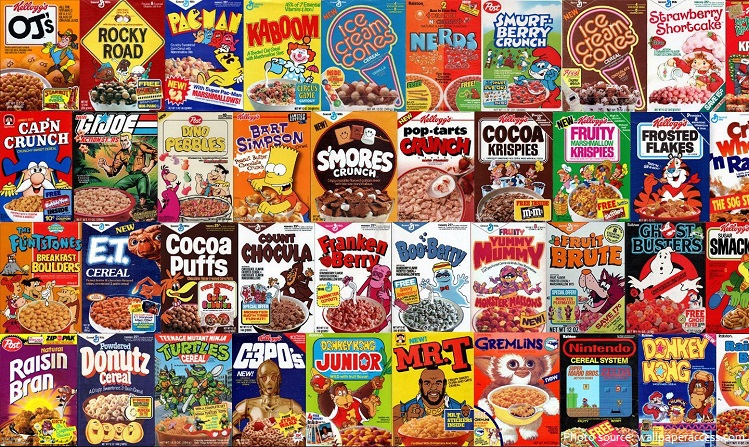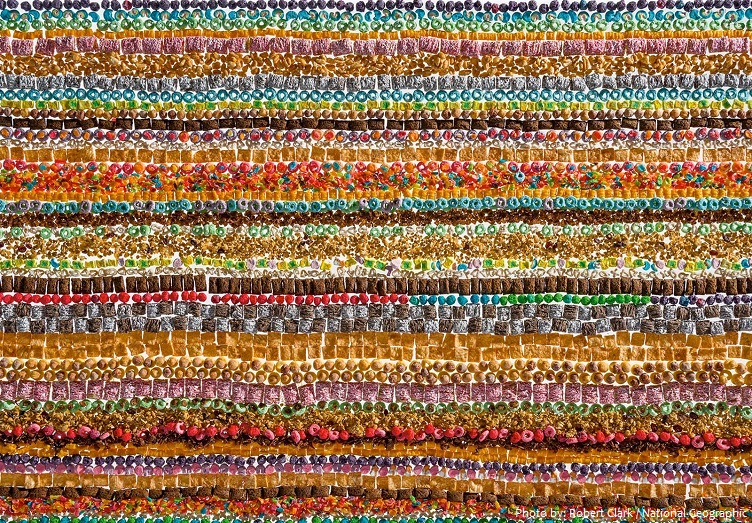Breakfast cereal or simply cereal is a traditional breakfast made from processed cereal grains.
They are mainly made of corn, rice, wheat, oats and barley and they are defined as processed grains for human consumption
Breakfast cereals are most often mixed with milk, but can also be paired with yogurt instead or eaten plain. Fruit or nuts are sometimes added.
Cereals are often fortified with vitamins but can still lack many of the vitamins needed for a healthy breakfast.
A significant proportion of cereals are made with high sugar content. Many are marketed towards children, feature a cartoon mascot, and may contain a toy or prize.
It is traditionally eaten as breakfast primarily in Western societies.
Warm cereals like porridge and grits have the longest history.
Ready-to-eat cold cereals, appearing around the late 19th century.
Dr. James Caleb Jackson created the world’s first cold breakfast cereal in 1863. The cereal never became popular, due to the inconvenient necessity of tenderizing the heavy bran and graham nuggets by soaking them overnight.
Poured from a box into a bowl and doused with milk, cold cereals like Kellogg’s Toasted Corn Flakes, Grape-Nuts and Shredded Wheat offered a previously unimaginable level of convenience to men, women and children whose schedules were adjusting to the quicker pace of an industrialized, rapidly urbanizing nation.
Muesli is a breakfast cereal based on uncooked rolled oats, fruit, and nuts. It was developed around 1900 by the Swiss physician Maximilian Bircher-Benner for patients in his hospital. It is available in a packaged dry form such as Alpen or Familia Swiss Müesli, or it can be made fresh.
Kellogg and his younger brother, Will Keith Kellogg, had figured out how to make a flaked cereal they called Corn Flakes. The younger Kellogg added sugar and began mass-marketing them, including the first in-box prize. Post developed a similar cereal called Elijah’s Manna, which he later renamed Post Toasties after religious groups protested.
A health clinician accidentally spilled a wheat bran mixture onto a hot stove, creating what would come to be called Wheaties. Its famous slogan, “Breakfast of Champions,” would first appear on abillboard for a minor league baseball team in Minnesota in the 1930s. Rice Krispies, with its characters Snap, Crackle and Pop, soon became a close rival.
Cheerios appeared as CheeriOats but were quickly renamed. They would become the best-selling cereal in America.
After World War II, cereal consumption increased with the advent of the baby boom, and sugar became a selling point. Kellogg’s invented Frosted Flakes and its pitchman, Tony the Tiger, and a new era of television advertising began.
Between 1970 and 1998, the number of different types of breakfast cereals in the US more than doubled, from about 160 to around 340 – and there were about 5,500 in 2020.
In this highly competitive market, breakfast cereal companies have developed an ever-increasing number of flavors (some are flavored like dessert or candy).
Most warm cereals can be classified as porridges, in that they consist of cereal grains which are soaked in hot water, cooked and/or boiled to soften them and make them palatable. Sweeteners, such as brown sugar, honey, or maple syrup, are often added either by the manufacturer, during cooking, or before eating. Porridge is especially popular in Scotland, Wales, Ireland, and England.
Breakfast cereal is the fourth largest source of added sugar in US foods, behind only soft drinks, desserts and candy, according to an April 2012 article in The Atlantic. Still, some cereals provide nutrients. One cup of dry bran cereal offers nearly 4 grams of protein and 7 grams of dietary fiber with less than 7 grams of sugar, for example. One-half cup of dry oatmeal is another healthy choice, with more than 5 grams of protein and 4 grams of fiber and less than a half-gram of sugar.
The benefits of eating nutritious cereal for breakfast go beyond staying full and avoiding obesity. Fiber-rich cereals, such as oatmeal and bran, may encourage good gastrointestinal health and decrease the risks of high blood pressure and high cholesterol.
The word “cereal” comes from ‘Ceres’, the name of the Roman goddess of harvest and agriculture.
The Old English word for dinner, disner, means to break a fast, and was the first meal eaten in the day until its meaning shifted in the mid-13th century. It was not until the 15th century that “breakfast” came into use in written English to describe a morning meal, which literally means to break the fasting period of the prior night; in Old English the term was morgenmete meaning “morning meal.”
The largest cereal breakfast was attended by 1,852 participants and was achived by Daher International Food Company/Poppins (Lebanon) at Jounieh Old Souk in Jounieh, Lebanon, on 2 October 2016.
